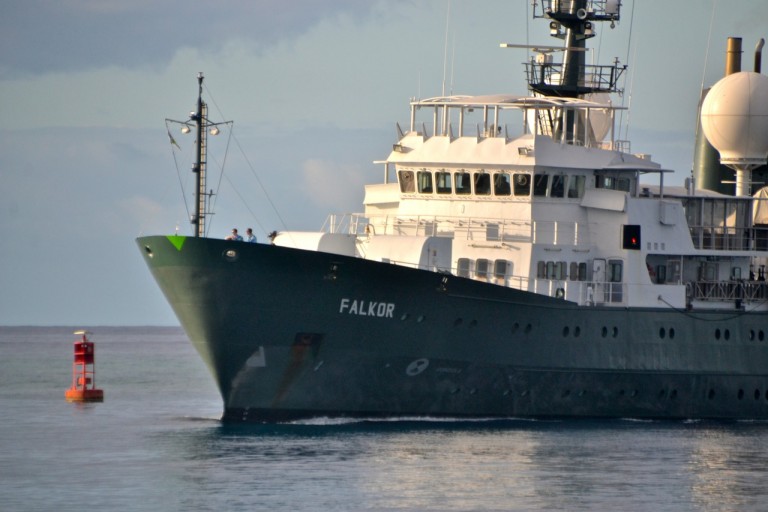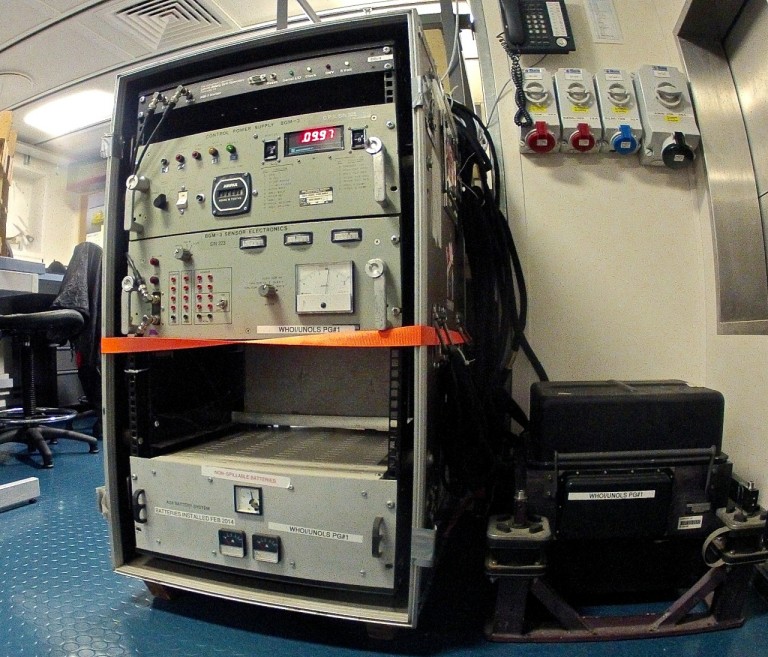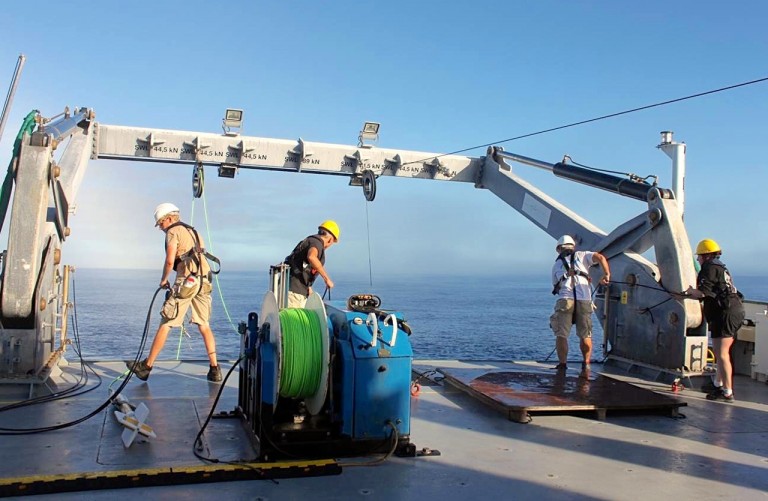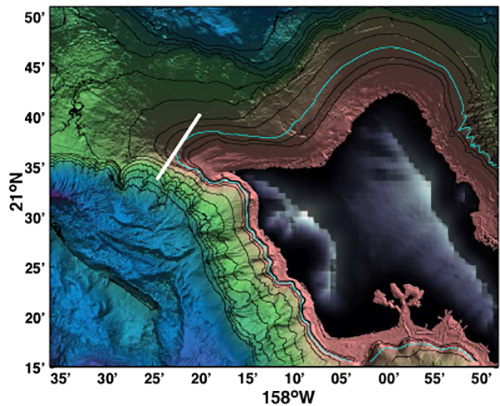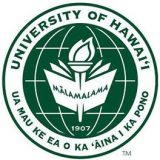Student Cruise Two
Falkor departed Honolulu for the second time with something other than the standard complement of seasoned ocean scientists. While the expedition produced valuable data, the focus was on inspiring student participants to move toward careers in ocean science, and for those already headed that direction, to provide much needed training for future expeditions.
This second week-long student cruise, done in collaboration with University of Hawaii at Manoa (UH), was split into two separate legs, doubling the number of students involved and allowing exploration of two different research questions using some of the most advanced oceanographic technologies available.
Leg One: Hidden Structure
The target for the first leg was the southwest quadrant of the partially submerged structure known as Maui Nui. This is the geological complex that includes the islands of Maui, Molokai, Lanai, and Kaho’Olawe. Those are just the pieces that rise above the surface. If you add the below-the-water view, you see that all these islands are part of what looks like one large underwater mountain. “But we don’t really know the order in which things were put together,” says Robert Dunn, a UH marine geologist who will lead the cruise, “It’s a bit of a puzzle.”
Finding pieces to solve this puzzle exposed students to Falkor’s high-resolution sonar mapping system. But seafloor maps can’t answer all the relevant questions, mainly because as sea level has risen and fallen, huge amounts of coral have grown and died on Maui Nui’s slopes, obscuring the underlying geological structure.
To get around the challenge the team also used a gravimeter and a magnetometer. A gravimeter takes very precise measurements of slight fluctuations in gravity caused by the differences in the weight of the rocky features below the ship. The magnetometer similarly measures small changes in magnetism.
Processing the data from these two instruments required corrections made using data from the sonar maps. Ultimately, researchers can tease out other influences to produce data about parameters like the density of rock layers below all that obscuring ancient coral. This will allow them to identify relatively narrow, denser areas (known as “dikes”) where, during the area’s volcanic history, magma intruded out into various segments of Maui Nui as it grew, helping to form the main structures we see today. The patterns of those magma dikes can help scientists figure out the timing and pattern of the different islands’ formations.
Leg Two: Mixing It Up
During the second leg of the cruise, a separate group of students got a taste of how biology and ocean physics interact. The team’s study site was the submerged ridge that extends out from Kaena Point on Oahu’s west side, and their focus was a phenomenon known as the internal tide.
When normal tides push water up features like this ridge, they can create submerged waves known as internal tides. The Hawaiian Islands are more or less perpendicular to the lunar tide flow, so this effect is particularly pronounced. The currents and vertical motions associated with internal tides have significant effects of their own, including a major role in the ocean’s energy budget. Although the energy from internal tides can spread across thousands of miles, the team focused on localized, high-energy processes at the ridge.
The team looked mainly at turbulent mixing around the top of the ridge created as internal tides move up and over. The hypothesis is that this turbulence mixes nutrients from deeper waters together with plankton in surface waters to support more biological productivity than would otherwise be possible.
While exploring that idea, as well as the physical processes involved, the students worked with two key pieces of equipment. The first is a microstructure profiler, which measures turbulence. It was deployed off Falkor at different times during tidal cycles to create detailed maps of the small-scale current fluctuations that collectively lead to turbulent mixing above the ridge.
The students also worked with Falkor’s CTD rosette to collect additional data about the waters below, including larger-scale current information. Water temperature was another key parameter, because it is a good tracer of turbulent processes. The team also gathered water samples at multiple depths. These were processed aboard the ship and ultimately analyzed on shore to determine what animals are present, and to look for chemical clues about where organisms get their food. By comparing against samples collected away from the ridge, the team was aiming to be able to assess whether the turbulence does in fact drive more productivity.
Most students have to wait until much later in their careers before having such an opportunity, says Glenn Carter, a UH oceanographer who led the second leg. “This is a really unusual opportunity and the students are extremely excited,” says Carter, “I think it will solidify their interest in oceanography.”
